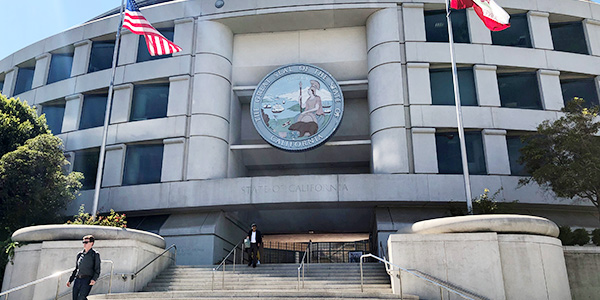California Public Utilities Commission members on Thursday called FERC’s proposal to double its transmission incentive adder and make the bonuses easier to get “disgusting,” “appalling” and enough to make “one’s blood boil.”
The commissioners made their comments before voting unanimously to authorize CPUC lawyers to file comments with FERC opposing a March 20 Notice of Proposed Rulemaking to update its transmission incentives policy (RM20-10). (See FERC Proposes Increased Tx Incentives.)
“I think that my 6th grade teacher Sister Augustine would have captured this moment really well because, ‘It is atrocious,’ as she would say,” Commissioner Martha Guzman Aceves said. “The greed in the time of such economic recession is just atrocious.”
CPUC President Marybel Batjer took the opportunity to wish for a shakeup at FERC.
“This body has got to change. Unfortunately, they’re termed,” Batjer said of the federal commissioners, who serve five-year terms. “But [the nation] clearly needs some better thinking and better logic coming out of FERC. There’s no doubt about it.
“I think ‘appalled’ is another word that comes to mind besides ‘atrocious,’” she said.
The NOPR that outraged the California commissioners proposes a new approach to awarding transmission incentives and a doubling of the adder for participating in an RTO from 50 to 100 basis points. It would shift the policy away from awarding benefits based on the risks and challenges of a transmission development project to one focused on economic and reliability benefits.
FERC, which gained authority to issue incentives in the Energy Policy Act of 2005, implemented its policy in Order 679 in 2006. Last March, it opened a docket to reconsider its policy, prompting disagreements among stakeholders over the course FERC was taking. (See Stakeholders Spar in FERC Tx Incentives Docket.)
In general, those that stand to profit from the change support the policy, while those who would pay oppose it. The CPUC is intervening on behalf of California ratepayers, who could end up paying hundreds of millions of dollars unnecessarily, commissioners and staff members said.
“Staff have overarching concerns with FERC’s untenable rationale for now making these incentives far easier to obtain and far more lucrative for transmission owners,” CPUC lawyer Jonathan Knapp told the commission Thursday, paraphrasing a staff memorandum he co-wrote.
Because of “dramatically increased levels of investment in transmission infrastructure and widespread reduction in transmission congestion, these incentives are not needed, particularly in the CAISO’s control area,” he said.
‘Head Scratcher’
When it directed FERC to issue the incentives in 2005, Congress relied on projections that the incentives would lower costs for ratepayers as demand for electricity grew, Knapp said. That turned out to be wrong, he said. In CAISO, transmission charges have increased 300% since 2006, while demand has decreased 5%, he said.
FERC lacks data showing the incentives worked, and “everything points in the opposite direction,” he said.
That’s why the proposed changes don’t make sense, Knapp said.
“Most fundamentally, FERC now proposes to ignore the definition of an incentive — something that encourages a person to do something — but instead proposes to essentially award bonuses to transmission owners for developing projects that they would already have undertaken or to take actions that in some instances are required by state law,” the lawyer said.
One of the changes would remove the requirement that TOs must voluntarily participate in an ISO or RTO to receive the adders. State law requires investor-owned utilities to participate in CAISO, but under the proposed FERC changes, the IOUs would get the doubled adder for remaining in CAISO, Knapp said.
He cited FERC Commissioner Richard Glick’s dissent to the March 20 decision calling the proposed change “the biggest head scratcher.”
PUC Commissioner Clifford Rechtschaffen said that the proposed changes would give Pacific Gas and Electric $145 million a year for “just showing up.”
In two decisions in 2018 and 2020, FERC ruled that CAISO participation is voluntary and that PG&E and other IOUs deserve the return on equity incentives. FERC upheld its original 2018 ruling on March 17 on remand from the 9th U.S. Circuit Court of Appeals. (See FERC Rejects RTO Incentive Adder Rehearing.)
CPUC Commissioner Genevieve Shiroma said FERC ignored the 9th Circuit and decided to “double-down on the incentives … inexplicably.”
“Who’s paying for all of this? The customers are paying for all of this,” Shiroma said. “And especially during this time of high unemployment, the pandemic, it’s not going to go away soon.”


